by Editor | Apr 29, 2013 | Attractions
By Elena del Valle
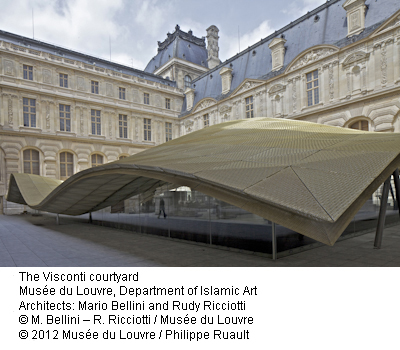
In September 2012, the Louvre Museum in Paris, France opened the Islamic Art Galleries with much fanfare. The iconic museum’s new wing is home to 18,400 objects, 3,000 of which were on display at the time of our visit. The majority of the items, 15,000, was part of the museum’s collection before the galleries were established. The remaining 3,400 works were on permanent loan from the Musée des Arts Décoratifs.
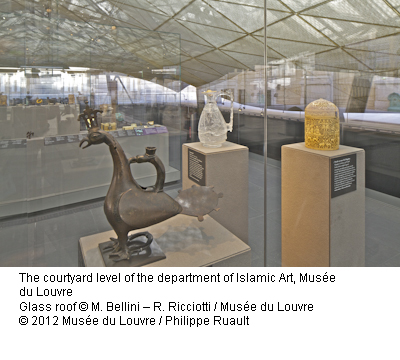
Because the interior buildings of the former palace were full the decision makers opted to enclose courtyard space to exhibit the Islamic art. They claimed 3,000 square meters of space for the new galleries, much of it had been formerly outdoors. The project, led by architects Mario Bellini and Rudy Ricciotti, began in 2001 and took 11 years to complete. It was the first major project of the museum in many years. The galleries form the eighth department at the Louvre. At the time of this writing, the other departments are Egyptian Antiquities; Greek, Etruscan, and Roman Antiquities; Near Eastern Antiquities and Eastern Mediterranean Provinces of the Roman Empire; Prints and Drawings; Decorative Arts; Paintings; and Sculptures.
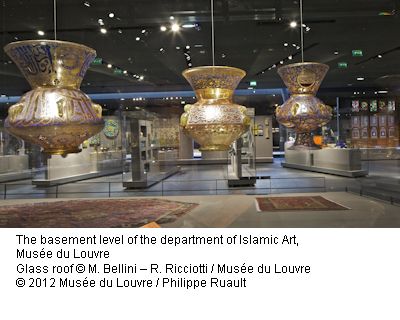
In 2012, 9.7 million people visited the museum. An estimated 650,000 of those visited the new wing since it opened last year. Exceptional items in the new wing highlighted in museum educational materials include: carved teak Door panel from the Dar al-Khilafa, Samarra; Pyxis of al-Mughira, a round casket carved of elephant ivory; Ewer from the treasury of Saint-Denis, made of carved and polished rock crystal; a stucco Princely head with traces of color; Monzón lion, a molded and engraved bronze lion; Baptistery of Saint Louis, made of copper alloy engraved and inlaid with silver, gold and black paste; a gilded and enameled Bottle with a coat of arms; a stone-paste Peacock dish; and Dagger with a horse-head hilt made of Damascus steel inlaid with gold, jade, rubies, emeralds and kundan gold.
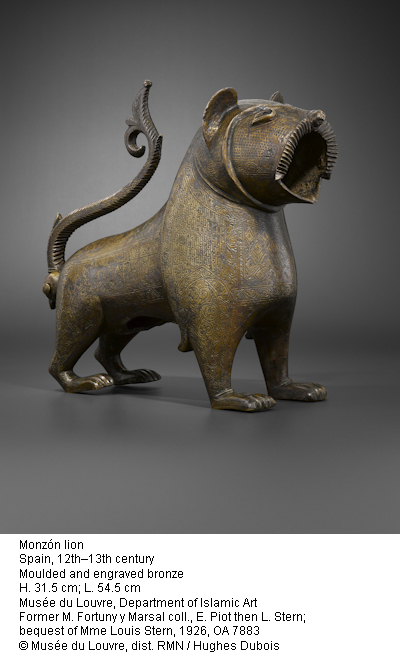
In 2011, the budget for the entire Louvre was 210 million euros. A little more than half, 55 percent, was from public subsidies, and 45 percent came from the museum’s own revenue generating sources. In contrast, 98.5 million euros were necessary to make the Louvre’s new Islamic wing a reality.
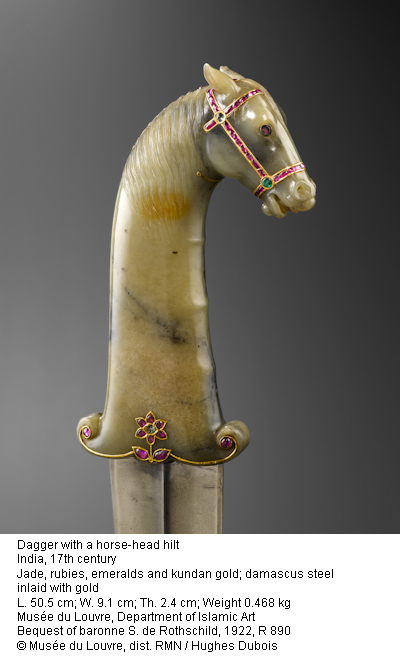
The French government supplied 31 million euros and the museum used 11.5 million of its own resources. A whopping 56 million euros were donated by foreign governments, and private donors. The lion’s share, 26 million euros, was provided by four foreign governments or their monarchs: Mohammed VI, King of Morocco; Sheik Sabah Al-Ahmad Al-Jaber Al-Sabah, Emir of Kuwait; Qabous Bin Said Al-Said Al Said, Sultan of Oman; and the Republic of Azerbaijan. The remaining 30 million euros were contributed by private individual donors, companies and foundations. Principal among those was the Alwaleed Bin Talal Foundation. The Total Foundation contributed 6 million euros and Lafarge 5.4 euros. View a recent detailed article on the Louvre Museum in the Simon and Baker Travel Review.
by Editor | Apr 22, 2013 | Accomodations, Attractions, Ecotourism, New Articles
Article and photographs by Chester Godsy and Joni Johnson-Godsy

Wildebeest and zebra gathered for the river crossing
Our first visit to Kenya coincided with the well known wildebeest migration. We were delighted to have an opportunity to spend a full day watching the animals gathering on the northern side of the Mara River, preparing to cross into the southern portion of the Maasai Mara Reserve during our stay at Elephant Pepper Camp. Part of the Cheli & Peacock portfolio, the nine-tent 160-hectare property offered a perfect combination of camping luxury in an intimate setting with the backdrop of classic Africa.
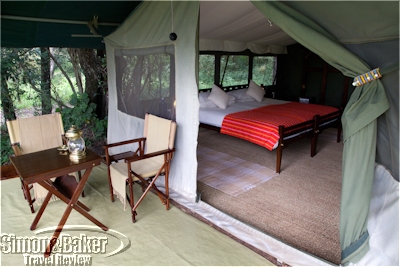
Our tent at Elephant Pepper Camp
by Editor | Apr 15, 2013 | Attractions, Audio, Food
By Elena del Valle
Photos by Gary Cox

Cyril Lignac in the kitchen at Le Quinzieme Cyril Lignac
The week after dining at Le Quinzieme Cyril Lignac in the southwest corner of Paris we went across town to Cuisine Attitude (10 cité Dupetit Thouars,75003 Paris, France, +33 1 49 96 00 50, fax +33 1 42 56 15 46, www.cuisineattitude.com, ecole@cuisineattitude.com), a cooking school owned by Cyril Lignac, the restaurant owner and executive chef of Le Quinzieme, where we attended the first part of Christmas Petits Fours, a cooking demonstration with some student participation. While at the cooking school I had an opportunity to speak with the chef in English. We extend a special thank you to him for agreeing to a short English language interview. Click below to listen to our conversation.
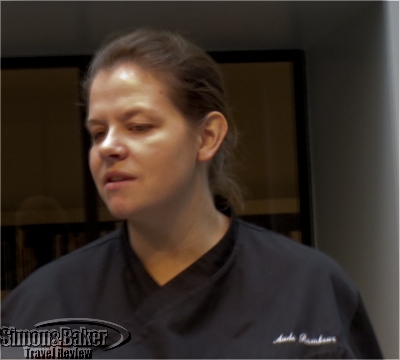
Aude Rambour, executive chef, Groupe Cyril Lignac
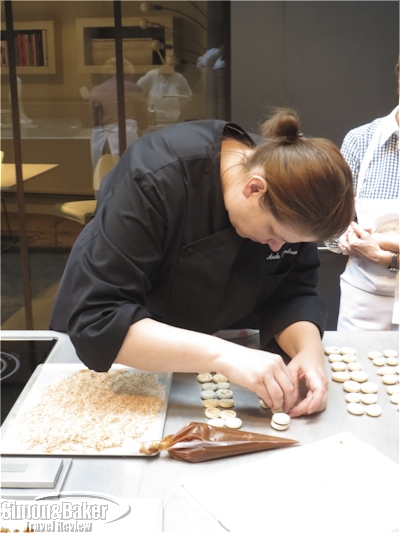
The executive chef demonstrating macaron assembly
After a brief welcome and introductions Aude Rambour, executive chef, Groupe Cyril Lignac, prepared the dessert dishes with the assistance of her staff. She explained the steps in French while a small group of French students observed. At times, she invited one or more of the students to take turns trying some of the steps. During the morning session, she prepared four desserts: Almond and dry fruits macaroons; Chocolate truffles, passion fruit; Candied chestnuts, light Bourbon vanilla cheese cream; and Tainori dark chocolate tart, Yuzu sorbet.
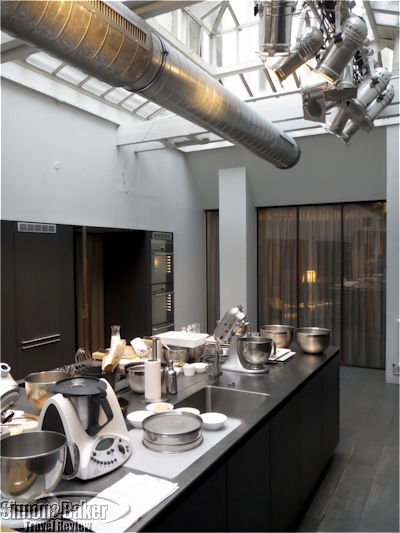
The teaching kitchen at Cuisine Attitude
Although the French language four hour program on holiday desserts was dynamic and fast paced, it was challenging to understand what was happening without any English language translation from the staff. We had understood someone would translate but the entire demonstration was conducted in French. A company representative informed us recently that an American chef has joined the group and is available to translate the sessions for English speakers.
by Editor | Apr 8, 2013 | Accomodations, Restaurants
By Elena del Valle
Photos by Gary Cox
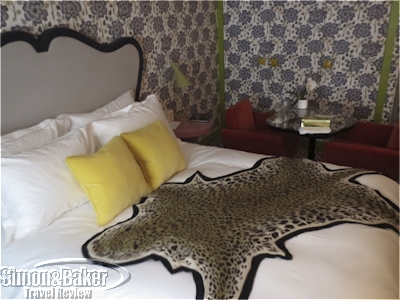
Room decor at Thoumieux featured a variety of patterns and fabrics
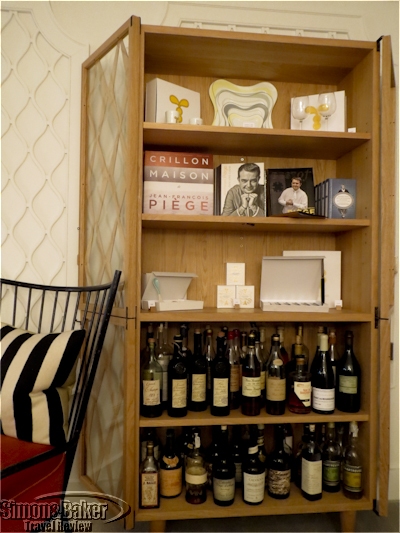
The lobby of the hotel doubled as the restaurant lounge
We liked Thoumieux, a 15-room boutique hotel in Paris, France, for its elegant yet comfort oriented features and electronic amenities, its location in the seventh arrondisement and its gourmet restaurant.
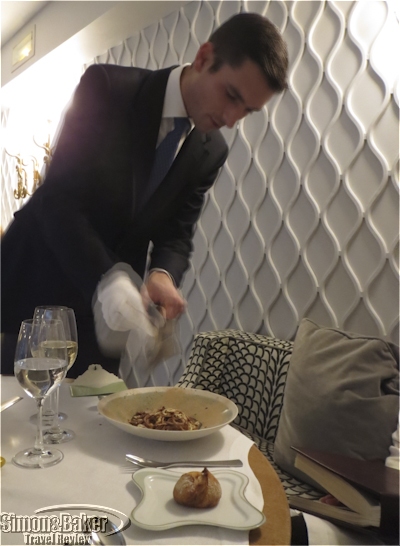
Fresh white truffles were in season and featured on the menu

Jean-Francois Piege presentation featured unique china for many courses
Restaurant Jean-Francois Piege, the hotel’s gourmet venue named for the eponymous chef owner, on the lobby level, offered fine dining in a cozy setting. Serving beautifully presented and unique dishes prepared in a modern French cuisine style the restaurant, like the hotel, was small with seating for only 18 guests. It was sold out the day we had lunch.
by Editor | Apr 1, 2013 | Accomodations, New Articles, Restaurants
Article and photos by Josette King
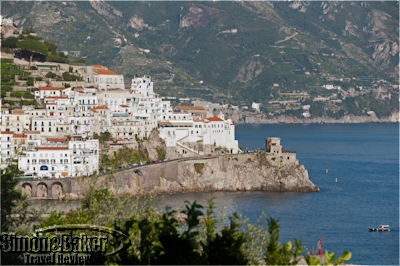
Our terrace had a stunning view of the Amalfi coastline
After decades of saying “some day,” I was finally wending my way along Amalfi Drive. Now officially known as Strada Statale 163, this rapid succession of hairpin turns originally carved by the Romans from the side of towering cliffs rising out of the Tyrrhanian Sea is widely recognized as one of the most spectacular coastal roads in Europe. Each turn revealed more eye-popping scenery. Isolated farmhouses and medieval watchtowers clung to the vertical rock face above, while whitewashed villages tumbled straight down to the sea below. Then on a rare stretch of straight road on the outskirts of Amalfi, an elegant three-story white stone facade appeared at the edge of the cliff. I had arrived at Italy’s version of Eden: the legendary Santa Caterina Hotel.
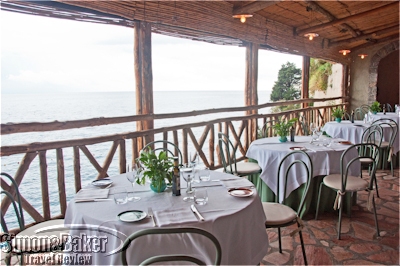
The Al Mare Restaurant terrace
Built into a 60 meters (200 feet) vertical cliff, the century-old property was a sumptuous multi-level complex of terraced citrus groves and lush gardens that started on Almalfi Drive to end with a saltwater swimming pool and private beach at the water’s edge. The hotel had the timeless grace of a classic Mediterranean villa, with light-filled open spaces, vaulted ceilings and arched floor-to-ceiling glass doors opening onto terraces that extended toward the sea. In the common areas as well as in my own suite, pale Majolica tile floors sprinkled with hand-painted flowers, and white walls and ceilings provided an understated background to better showcase the antique furniture and artworks interspersed throughout. But beyond its breathtaking surroundings and exquisite decor, the distinctive charm of the Santa Caterina came from its people, management and staff alike, for whom the property has always been a family affair. Giuseppe Gambardella originally built the villa in 1880, only to see it destroyed by a rock slide a decade later.
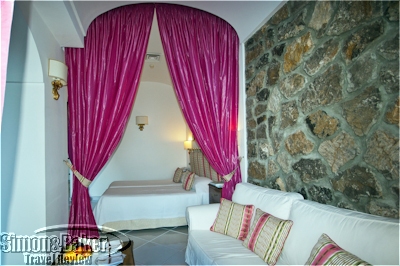
A soaring ceiling enhanced the airy feel of the suite
In 1904, his son Crescenzo personally rebuilt it in a safer location farther up the coast. He included six guest rooms, and the Santa Caterina was born. Fast forward through the 20th century, during which the Gambardella family continuously expanded and enhanced the property to make it the glamorous luxury resort with 66 guest rooms and suites that we enjoy today. Along the way, Crescenzo’s daughters, Giuseppina (Giusi) and Carmella (Ninni) assumed the direction. Now their own children, and more recently grandchildren, hold various positions to carry on the family tradition.
So it is with the staff as well. Many have been at the Santa Caterina for decades, in some cases for two or more generations, an extended part of the Gambardella family, upholding the tradition of flawless service for which the hotel is famous. There is no improvising this unique type of gracious hospitality. It makes me think of the doorman who not only stood with umbrella at the ready, but also profusely apologized for the rain, as though he considered it a personal shortcoming that he had failed to deliver perfect weather every day of my visit.
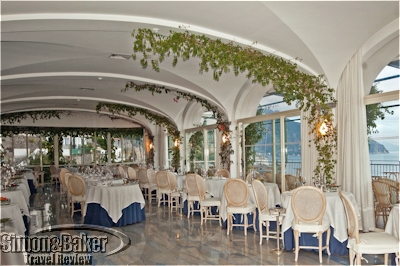
The Santa Caterina Restaurant dining room
The Santa Caterina Restaurant was equally brilliant. Not only did its scenic dining room offer a fabulous view of the old city of Amalfi and the Gulf of Salerno, but it was also one of the best restaurants in town. Whether for lunch or dinner, Chef Domenico Cuomo and his team showcased the excellent traditional cuisine of the area, prepared to order from seasonal ingredients and the latest catch of local fishermen, as well as irresistible home made pasta dishes. There again the service was impeccable: attentive, friendly and precisely paced to ensure a superb dining experience, and a wonderful antidote to the standard tourist fare dished out in abundance all along the coast.
It was a restaurant well worth return visits, even if I didn’t have the good fortune to be a guest at the Santa Caterina; which of course would be most unlikely. Now that I have experienced the unique hospitality of the Gambardella family and staff, I couldn’t imagine staying anywhere else on the Amalfi coast. Rather, I yearn to return to the welcoming embrace of the Santa Caterina as the first opportunity; and yes, it’s nice that the idyllic vistas of the Amalfi coast just happen to be included.



























